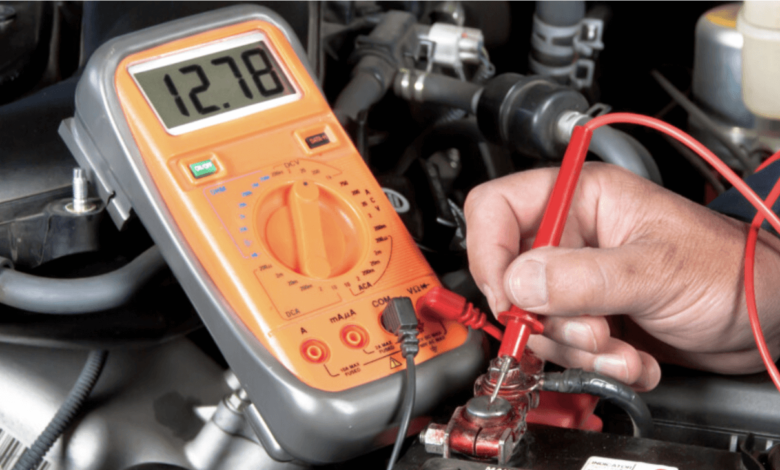Service Battery Charging System Chevy Vehicles

Owning a Chevy vehicle comes with a sense of pride and reliability. These American-made cars have a reputation for durability and performance. However, like any other automobile, Chevys are not immune to mechanical issues. One common problem that Chevy owners may encounter is a malfunctioning battery charging system. In this article, we will explore the signs of a faulty service battery charging system chevy, understand its causes, learn how to diagnose the issues, and discuss some essential maintenance tips to keep it in top-notch condition.
Understanding the service Battery Charging System Chevy Vehicles
Before we dive into troubleshooting, let’s grasp the basics of the battery charging system in Chevy vehicles.The battery stores electrical energy, and the alternator recharges it while the engine is running. The voltage regulator ensures a steady flow of electricity to prevent overcharging. This system works in harmony to power the vehicle’s electrical components.
Signs of Battery Charging System Issues
Recognizing the warning signs of a problematic battery charging system can save you from being stranded on the road.Dimming Headlights: If your headlights seem to lose brightness when idling or driving at low speeds, it could be a sign of a weak charging system.
Dashboard Warning Lights: The appearance of warning lights on the dashboard, especially the battery or charging system light, demands immediate attention.
Difficulty Starting the Vehicle: If your Chevy struggles to start or requires jump-starting frequently, the battery charging system may be at fault.
Causes of Battery Charging System Problems
Several factors can lead to issues with the battery charging system. Understanding these causes can help prevent future problems:
Battery Age and Condition: Over time, batteries naturally degrade, impacting their ability to hold a charge effectively.
Alternator Issues: A faulty alternator may not provide sufficient power to recharge the battery, leading to draining issues.
Faulty Voltage Regulator: A malfunctioning voltage regulator can result in inconsistent charging and damage the battery over time.
Diagnosing the Battery Charging System
Before seeking professional help, you can perform some initial diagnostics:
Testing the Battery: Use a multimeter to check the battery’s voltage and ensure it holds a charge.
Checking the Alternator Output: Measure the alternator’s output voltage to verify it’s producing enough power to charge the battery.
Inspecting the Voltage Regulator: Perform a visual inspection of the voltage regulator for any signs of damage or loose connections.
DIY Steps to Service the Battery Charging System
If you’re a DIY enthusiast, some basic maintenance steps can help resolve minor battery charging system issues:
Cleaning Battery Terminals: Corrosion on battery terminals can disrupt the electrical flow.
Replacing a Faulty Alternator: If the alternator is the culprit, consider replacing it with a new or refurbished unit.
Fixing Voltage Regulator Problems: In some cases, the voltage regulator may require replacement or adjustment.
When to Seek Professional Help
While DIY maintenance can be rewarding, certain issues demand the expertise of a qualified mechanic. Seek professional help when:
- The battery is old or damaged and requires replacement.
- The alternator needs complex repairs or replacement.
- The voltage regulator is malfunctioning and beyond simple adjustments.
Tips for Maintaining a Healthy Battery Charging System
Regular maintenance is crucial for a reliable battery charging system. Follow these tips to keep it in excellent condition:
Regular Inspections: Schedule regular inspections to catch potential issues before they become severe problems.
Battery Maintenance: Keep the battery clean and secure, and check its fluid levels regularly.
Alternator Belt Checks: Ensure the alternator belt is appropriately tensioned to facilitate smooth operation.
Upgrading Your service Battery Charging System Chevy
For Chevy owners who demand more power for their electrical accessories, consider these upgrades:
High-Output Alternators: High-output alternators provide increased power output, ideal for vehicles with numerous electrical add-ons.
Deep Cycle Batteries: Deep cycle batteries are designed to handle repetitive charging and discharging, perfect for off-road adventures. Read more…
Conclusion
A well-functioning service battery charging system Chevy is essential for every owner. Regular maintenance, timely diagnostics, and professional help when necessary can keep your Chevy running smoothly. Remember, addressing charging system issues promptly can prevent more extensive problems down the road.
FAQs After the Conclusion
- Q: How often should I check my battery’s fluid levels? A: It’s advisable to check your battery’s fluid levels every three months.
- Q: Can I jump-start my Chevy if the battery is dead? A: Yes, you can jump-start your Chevy, but it’s essential to address the underlying battery charging system issue afterward.
- Q: What’s the average lifespan of a car battery? A: On average, a car battery lasts between 3 to 5 years, depending on usage and maintenance.
- Q: Will upgrading to a high-output alternator affect my vehicle’s warranty? A: As long as the upgrade is performed by a qualified professional, it should not void the vehicle’s warranty.
- Q: Can I use a regular car battery for off-road adventures? A: While it is possible, deep cycle batteries are better suited for off-road adventures due to their unique design.
